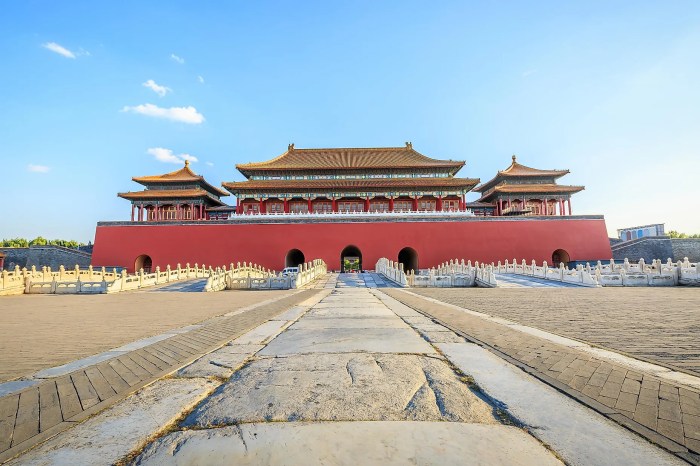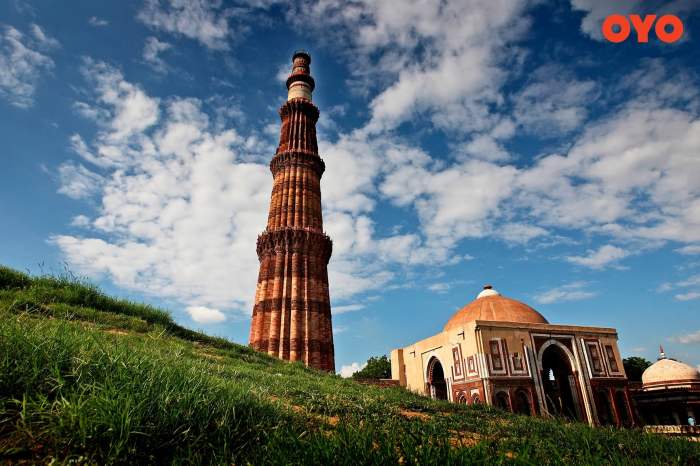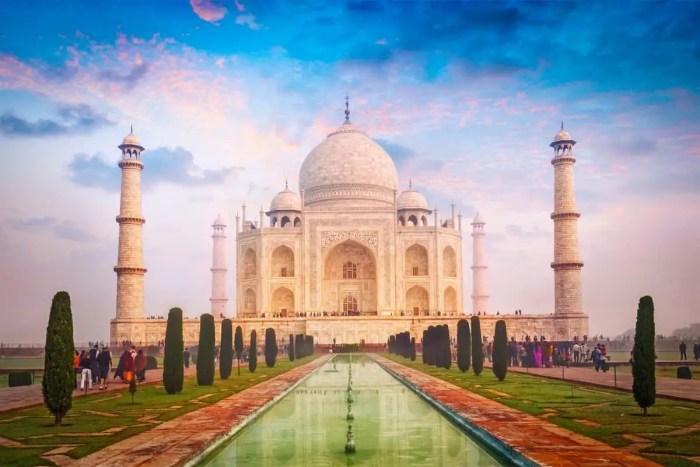UNESCO World Heritage Sites are cultural and natural landmarks of outstanding universal value that are recognized and protected by the United Nations Educational, Scientific and Cultural Organization (UNESCO). These sites represent the best examples of humanity’s cultural and natural heritage, and they are preserved for future generations to appreciate and enjoy.
From the Great Wall of China to the Pyramids of Giza, from the Amazon rainforest to the Taj Mahal, UNESCO World Heritage Sites encompass a wide range of cultural and natural wonders. They tell the story of human history, culture, and nature, and they provide a glimpse into the diversity and beauty of our planet.
Introduction: UNESCO World Heritage Sites

UNESCO World Heritage Sites are cultural or natural landmarks or sites of outstanding universal value, designated by the United Nations Educational, Scientific and Cultural Organization (UNESCO). These sites are considered to be of exceptional importance to humanity and are protected by international treaties.
To be designated as a UNESCO World Heritage Site, a site must meet at least one of ten selection criteria. These criteria include cultural, historical, scientific, and natural significance, as well as outstanding universal value.
Cultural Criteria
The cultural criteria for designation as a UNESCO World Heritage Site include:
- Representing a masterpiece of human creative genius
- Exhibiting an important interchange of human values over a span of time or within a cultural area of the world
- Bearing a unique or exceptional testimony to a cultural tradition or to a civilization that is living or that has disappeared
Cultural Sites

Cultural sites are those that hold significant historical, architectural, or artistic value. They often represent the cultural heritage of a region or country and are recognized by UNESCO as World Heritage Sites.
UNESCO’s World Heritage Sites are chosen based on their cultural significance and are classified into three categories: cultural, natural, and mixed. Cultural sites include monuments, buildings, groups of buildings, or entire cities that are considered to be of outstanding universal value. They can range from ancient ruins to modern architectural masterpieces and are often a source of national pride and identity.
Examples of Cultural UNESCO World Heritage Sites
Some notable examples of cultural UNESCO World Heritage Sites include:
- The Great Wall of China: A series of fortifications built over centuries to protect the Chinese empire from invaders.
- The Taj Mahal: A mausoleum in India built by the Mughal emperor Shah Jahan in memory of his wife.
- The Pyramids of Giza: A complex of ancient Egyptian tombs and pyramids, including the Great Pyramid of Giza, one of the Seven Wonders of the Ancient World.
- The Colosseum: An ancient amphitheater in Rome, Italy, where gladiators fought and public spectacles were held.
- The Acropolis of Athens: A hilltop citadel in Greece that is home to the Parthenon, an iconic temple dedicated to the goddess Athena.
These sites are just a few examples of the many cultural landmarks that have been recognized by UNESCO as World Heritage Sites. They represent the rich and diverse cultural heritage of humanity and are a testament to the creativity and ingenuity of our ancestors.
Natural Sites
UNESCO World Heritage Sites encompass a diverse range of natural wonders, from pristine forests to towering mountains and crystal-clear lakes. These sites hold immense ecological and geological significance, showcasing the Earth’s extraordinary biodiversity and the forces that have shaped our planet.
The ecological importance of natural World Heritage Sites lies in their role as habitats for a vast array of plant and animal species. These sites protect threatened and endangered species, ensuring their survival and maintaining the delicate balance of ecosystems. Moreover, they provide essential resources such as water, food, and shelter for local communities, contributing to sustainable livelihoods.
Geological Wonders
Natural World Heritage Sites also serve as invaluable records of Earth’s geological history. They preserve ancient rock formations, fossils, and other geological features that provide insights into the planet’s evolution over billions of years. These sites offer opportunities for scientific research and education, helping us understand the processes that have shaped our planet and the forces that continue to mold it.
Mixed Sites

UNESCO recognizes sites that possess exceptional universal value due to their unique blend of cultural and natural heritage. These mixed sites showcase the intricate relationship between human civilization and the natural environment.
Mixed sites demonstrate how cultural and natural heritage are inextricably linked, with each element contributing to the site’s overall significance. The presence of both cultural and natural features enhances our understanding of the site’s history, ecology, and the interactions between humans and their environment.
Examples of Mixed Sites
- Taj Mahal (India): This iconic mausoleum combines architectural brilliance with lush gardens and waterways, creating a harmonious blend of Mughal architecture and natural beauty.
- Huangshan Mountain (China): Known for its picturesque peaks, ancient pine trees, and rich cultural heritage, Huangshan Mountain offers a stunning fusion of natural wonders and cultural significance.
- Grand Canyon National Park (USA): This vast natural wonder showcases the power of geological forces over time, while also revealing the cultural heritage of Native American tribes who have inhabited the area for centuries.
- Petra (Jordan): The lost city of Petra is a testament to human ingenuity and artistic achievement, nestled amidst the rugged and awe-inspiring desert landscape.
- Stonehenge, Avebury and Associated Sites (UK): This prehistoric monument complex represents a profound connection between human culture and the natural environment, as evidenced by the megalithic structures and surrounding landscape.
Conservation and Management

Preserving UNESCO World Heritage Sites presents a myriad of challenges, ranging from natural disasters to the impact of human activities. Conservation strategies involve monitoring, restoration, and adaptive management to ensure their long-term preservation.
International cooperation is vital in sharing knowledge, resources, and expertise. Sustainable tourism practices minimize the negative impacts of tourism while promoting economic development in local communities.
Before embarking on a beach holiday, it’s crucial to prepare a comprehensive packing list. From essential swimwear to sunscreen and sunglasses, our beach holiday packing list will ensure you have everything you need for a relaxing and enjoyable time by the seaside.
After soaking up the sun and exploring the coastline, don’t forget to visit nearby UNESCO World Heritage Sites, where you can delve into the region’s rich history and cultural heritage.
Role of International Cooperation
- Sharing best practices and innovative conservation techniques
- Providing financial and technical assistance to developing countries
- Establishing international agreements and conventions to protect sites
- Coordinating research and monitoring efforts
Sustainable Tourism, UNESCO World Heritage Sites
Sustainable tourism practices aim to:
- Minimize environmental impacts (e.g., pollution, waste generation)
- Respect cultural heritage and local communities
- Promote economic benefits to local communities
li>Educate visitors about the importance of conservation
Cultural Impact
UNESCO World Heritage Sites hold immense cultural significance, transcending geographical boundaries and fostering a sense of global unity. These sites represent the culmination of human creativity, ingenuity, and cultural heritage, serving as tangible reminders of our shared past and diverse traditions.
By preserving and showcasing these cultural landmarks, UNESCO promotes understanding, appreciation, and preservation of diverse cultures. These sites provide a platform for cultural exchange, fostering dialogue and mutual respect among people from different backgrounds.
Preservation and Revitalization of Cultural Heritage
- UNESCO World Heritage Sites help preserve endangered cultural traditions, languages, and art forms by providing a framework for their protection and revitalization.
- These sites serve as living laboratories for cultural research, enabling scholars and experts to study and document traditional practices and customs.
Cultural Tourism and Economic Development
- UNESCO World Heritage Sites attract millions of visitors annually, contributing to local economies and promoting sustainable tourism practices.
- Tourism revenue generated from these sites supports local businesses, creates jobs, and fosters economic growth in surrounding communities.
Education and Cultural Awareness
- UNESCO World Heritage Sites serve as educational resources, providing opportunities for visitors to learn about different cultures, histories, and traditions.
- These sites promote cultural awareness and foster a sense of global citizenship, encouraging respect for diversity and appreciation for the richness of human heritage.
Educational Value
UNESCO World Heritage Sites offer immense educational value, providing opportunities to learn about history, culture, and the environment. These sites serve as living classrooms, where visitors can witness firsthand the tangible remains of past civilizations, diverse cultural practices, and the wonders of the natural world.
UNESCO World Heritage Sites are cultural or natural landmarks of outstanding universal value. If you’re planning a beach holiday, don’t forget to pack a beach holiday packing list to ensure you have everything you need for a relaxing and enjoyable trip.
After exploring the stunning UNESCO World Heritage Sites, you can unwind on the beach and soak up the sun.
Through immersive experiences at these sites, students and individuals can gain a deeper understanding of:
Historical Significance
- Major historical events and their impact on human civilization
- The rise and fall of empires, architectural styles, and technological advancements
- The lives and contributions of influential figures from different eras
Cultural Diversity
- Unique traditions, beliefs, and customs of various cultures
- The importance of cultural heritage in shaping identities and communities
- The challenges and opportunities of cultural preservation in a globalized world
Environmental Awareness
- The fragility and resilience of natural ecosystems
- The importance of biodiversity and conservation efforts
- The impact of human activities on the environment and sustainable development
Economic Impact
UNESCO World Heritage Sites possess significant economic benefits, contributing to tourism, job creation, and local development. These sites attract visitors from around the world, generating revenue for local businesses and supporting the tourism industry.
Tourism
World Heritage Sites serve as major tourist destinations, drawing millions of visitors annually. This influx of tourists boosts local economies through increased spending on accommodation, transportation, food, and souvenirs. The Taj Mahal in India, for instance, attracts over 7 million tourists each year, contributing significantly to the local tourism sector.
Job Creation
The tourism industry associated with World Heritage Sites creates numerous job opportunities. Local communities benefit from employment in hotels, restaurants, tour companies, and other tourism-related businesses. The Great Barrier Reef in Australia supports over 64,000 jobs, contributing to the local economy and providing livelihoods for many individuals.
Local Development
World Heritage Sites can stimulate local development by attracting investment and infrastructure improvements. The designation of a site can lead to increased funding for conservation and preservation efforts, which can benefit local communities. The Historic Centre of Vienna, for example, has received significant investment in restoration and infrastructure, revitalizing the area and improving the quality of life for residents.
Case Studies

UNESCO World Heritage Sites are selected based on their outstanding universal value. They represent some of the most important cultural and natural heritage in the world, and they are protected under international law.
There are over 1,100 UNESCO World Heritage Sites in the world, located in over 160 countries. These sites include everything from ancient ruins to modern architecture, from natural wonders to cultural landscapes.
Case Study: The Great Wall of China
The Great Wall of China is one of the most iconic structures in the world. It is a UNESCO World Heritage Site and one of the Seven Wonders of the World. The Great Wall was built over a period of centuries to protect China from invaders. It is an impressive feat of engineering and a testament to the ingenuity of the Chinese people.
The Great Wall is a popular tourist destination, and it is estimated that over 10 million people visit it each year. However, the Great Wall is also facing a number of challenges, including pollution, tourism, and climate change.
Pollution is a major threat to the Great Wall. The air in Beijing is heavily polluted, and this pollution is damaging the stonework of the Great Wall. Tourism is also a threat to the Great Wall. The large number of tourists who visit the Great Wall each year is putting a strain on the site, and it is causing damage to the walls.
Climate change is also a threat to the Great Wall. The Great Wall is located in a region that is experiencing increasing temperatures and precipitation. This is causing the walls to deteriorate, and it is also making the site more vulnerable to erosion.
UNESCO World Heritage Sites are cultural and natural landmarks of outstanding universal value. They span the globe, showcasing the diversity of human creativity and the beauty of the natural world. Many of these sites also host vibrant cultural festivals that celebrate local traditions and customs.
From the vibrant colors of the Holi festival in India to the rhythmic beats of the Carnival in Brazil, these best cultural festivals worldwide offer a unique opportunity to experience the rich tapestry of human culture. And as you explore these UNESCO World Heritage Sites, be sure to immerse yourself in the local festivals to gain a deeper understanding of the people and their traditions.
Despite these challenges, the Great Wall remains a UNESCO World Heritage Site and one of the most popular tourist destinations in the world. It is a testament to the ingenuity of the Chinese people, and it is a reminder of the importance of protecting our cultural heritage.
Future Outlook

The future of UNESCO World Heritage Sites is bright, but it is not without challenges. As the world changes, so too must the way we protect and manage these important places. Emerging trends and challenges in their conservation and management will shape how we approach these sites in the years to come.
Emerging Trends
- Increased tourism: As the world becomes more interconnected, more people are traveling to see UNESCO World Heritage Sites. This can put a strain on these sites, both in terms of environmental impact and visitor pressure.
- Climate change: Climate change is already having a significant impact on UNESCO World Heritage Sites. Rising sea levels, changes in precipitation patterns, and more extreme weather events are all threats to these sites.
- New technologies: New technologies, such as drones and 3D scanning, are providing new ways to monitor and protect UNESCO World Heritage Sites. These technologies can help us to better understand these sites and to identify threats to them.
Challenges
- Funding: The conservation and management of UNESCO World Heritage Sites is expensive. As the number of sites increases, so too does the need for funding. This funding must come from a variety of sources, including governments, international organizations, and private donors.
- Governance: The governance of UNESCO World Heritage Sites is complex. These sites are often located in multiple countries and jurisdictions, which can make it difficult to coordinate their management. This complexity can also lead to conflicts between different stakeholders, such as local communities, governments, and international organizations.
- Political instability: Political instability can pose a threat to UNESCO World Heritage Sites. In some cases, sites have been damaged or destroyed during wars or other conflicts.
Summary
UNESCO World Heritage Sites are more than just tourist destinations; they are symbols of our shared human heritage and our responsibility to protect it. They remind us of the importance of preserving our cultural and natural treasures, and they inspire us to work together to create a more sustainable and equitable world.
Essential FAQs
What are the criteria for designation as a UNESCO World Heritage Site?
To be designated as a UNESCO World Heritage Site, a site must meet at least one of ten selection criteria. These criteria include cultural, natural, and mixed criteria, and they assess the site’s outstanding universal value in terms of its historical, aesthetic, scientific, or other cultural or natural significance.
How many UNESCO World Heritage Sites are there?
As of 2023, there are 1,154 UNESCO World Heritage Sites in 167 countries. These sites include 897 cultural sites, 218 natural sites, and 39 mixed sites.
What is the most visited UNESCO World Heritage Site?
The most visited UNESCO World Heritage Site is the Great Wall of China, which receives over 10 million visitors each year.